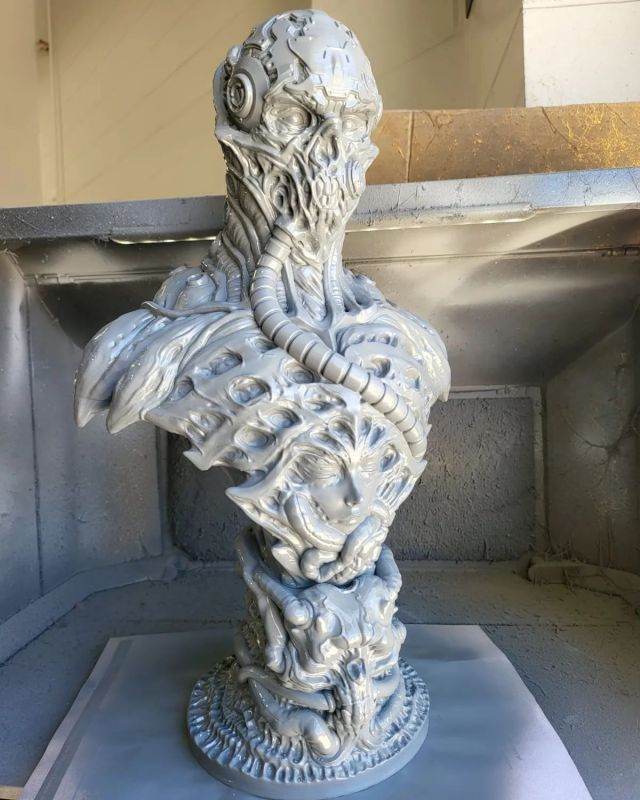Stereolithography (SLA) is a type of 3D printing technology that uses light to cure and harden liquid resin into a solid object. SLA 3D printing has been around since the 1980s and is widely used in industries such as dental, jewelry, and product design, but has become more accessible in recent years due to advances in technology and the development of affordable desktop SLA 3D printers. In this blog, we’ll explore how a SLA 3D printer works and what makes it a unique and effective option for 3D printing.
The Design Like with other 3D printing technologies, the first step in using a SLA 3D printer is to create a digital design of the object you want to print using computer-aided design (CAD) software. There are many CAD programs available, ranging from simple, beginner-friendly options to professional-level software.
Slicing the Design Once you have your design, the next step is to slice it into multiple layers. This is usually done by a program called a slicer, which generates the instructions for the 3D printer based on the design. The slicer program determines the thickness of each layer, which is known as the layer height.
Preparing the Build Platform The build platform of a SLA 3D printer is typically coated with a layer of liquid resin. A substrate is then placed on top of the resin to separate it from the build platform and prevent it from being cured.
Exposure to Light The SLA 3D printer uses a light source, such as a laser or a DLP projector, to cure and harden the liquid resin layer by layer. The light is directed onto the surface of the resin, causing it to solidify and bond to the previous layer. The build platform is then raised slightly, and the process is repeated until the entire object is complete.
Removing the Object Once the object is complete, it is carefully removed from the build platform, rinsed in a solvent to remove any uncured resin, and then left to cure for several hours. The final object is typically quite strong and has a high level of detail, making it suitable for a variety of applications.
Why Choose SLA 3D Printing? SLA 3D printing offers many advantages over other 3D printing technologies, including its high resolution, accuracy, and ability to produce highly detailed objects. SLA 3D printers also have a relatively small footprint, making them suitable for use in small studios or even at home. Additionally, SLA 3D printing is a fast and efficient process, with many SLA 3D printers capable of producing objects in a matter of hours.
There are several types of UV resin used in stereolithography (SLA) 3D printing. Each type of resin has its own unique properties, making it suitable for different applications. Some of the most common types of UV resin are:
-
Standard Resin: This is the most commonly used type of UV resin and is ideal for prototyping and general-purpose 3D printing. It has good accuracy and a high level of detail, and is available in a range of colors.
-
Flexible Resin: As the name suggests, flexible resin is designed to be more flexible and elastic than standard resin. It is ideal for making objects that require some flexibility, such as phone cases or shoe soles.
-
Rigid Resin: Rigid resin is designed for applications where strength and rigidity are important. It is often used for making objects such as gears or other mechanical parts.
-
Clear Resin: Clear resin is designed to be transparent and is ideal for creating objects that require transparency, such as lenses or light fixtures.
-
Castable Resin: Castable resin is designed for casting objects in metal or other materials. It is often used for creating jewelry or other small objects.
-
Dental Resin: Dental resin is specifically designed for dental applications, such as creating models for orthodontic appliances or implants. It is biocompatible and has a high level of accuracy.
-
High Temp Resin: High temp resin is designed to withstand high temperatures, making it ideal for applications such as casting molds for high-temperature materials.
These are just some of the most common types of UV resin used in SLA 3D printing. The choice of resin will depend on the specific application and the desired properties of the final object.
In conclusion, SLA 3D printing is a powerful and versatile technology that has been used in a variety of industries for decades. With the development of affordable desktop SLA 3D printers, it has become more accessible than ever before, making it an excellent option for those looking to bring their designs to life. Whether you’re an artist, engineer, or hobbyist, SLA 3D printing is sure to offer a unique and effective solution for your 3D printing needs.

